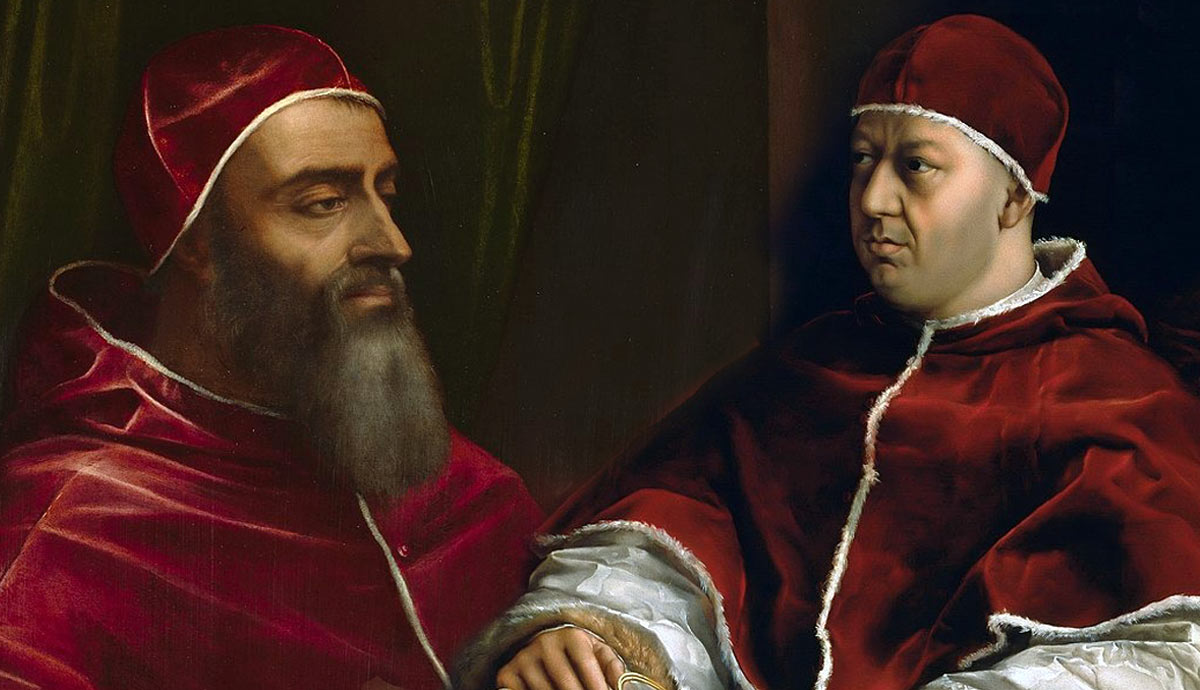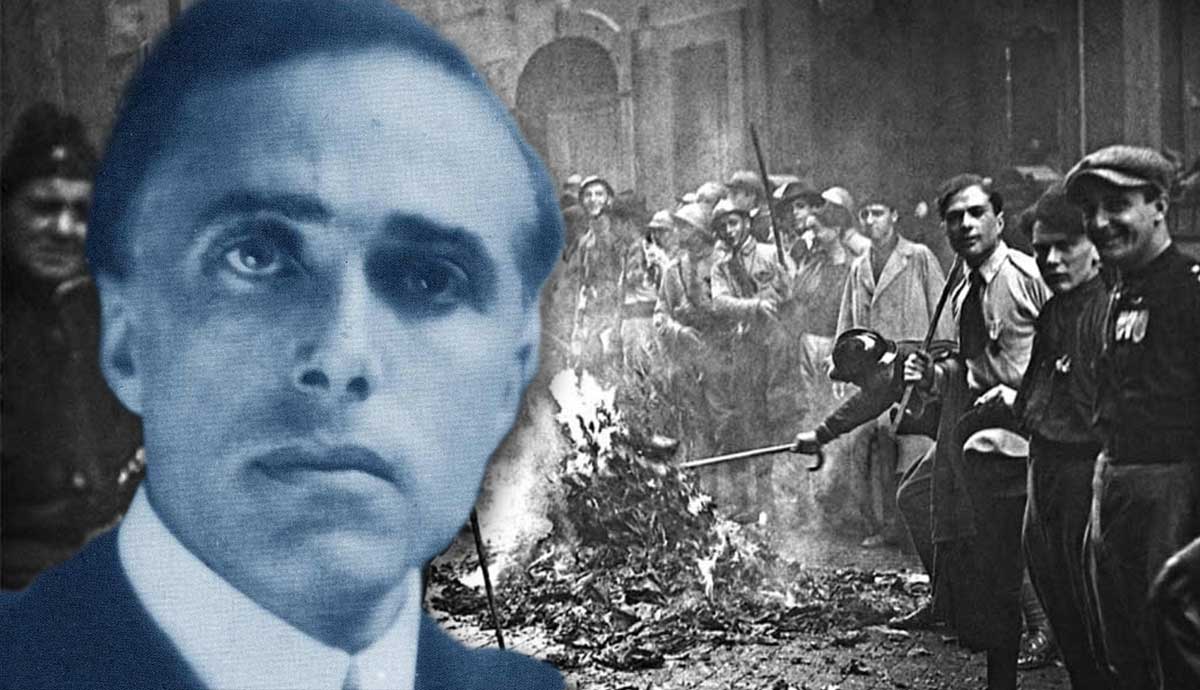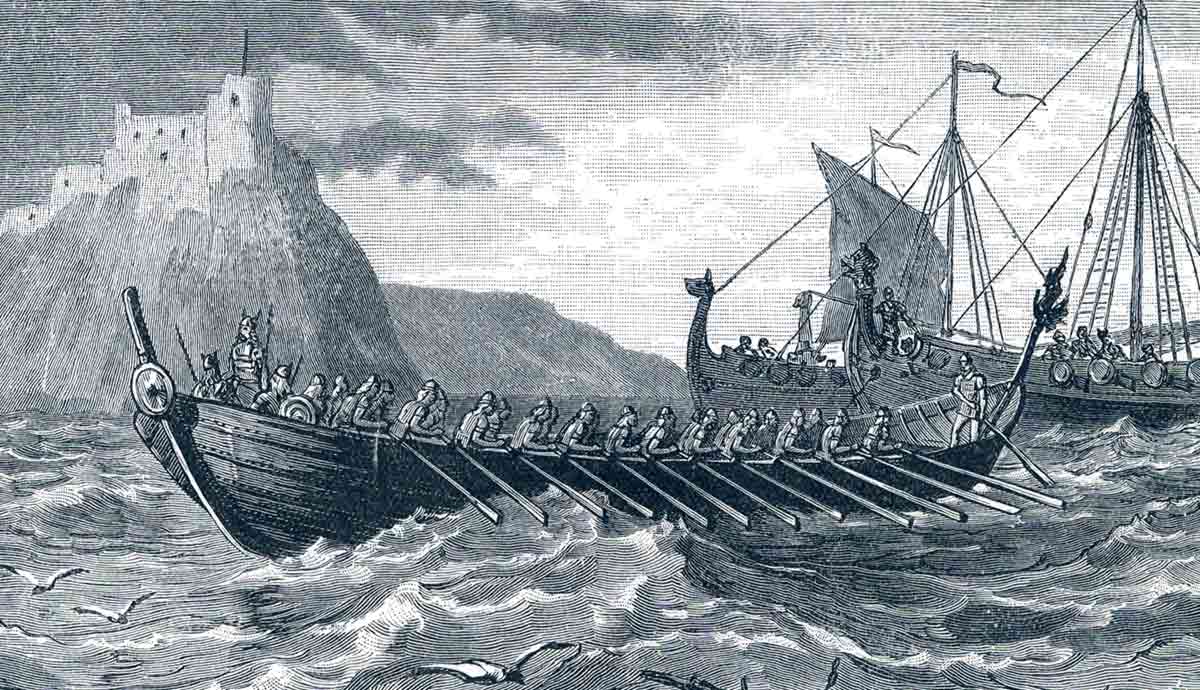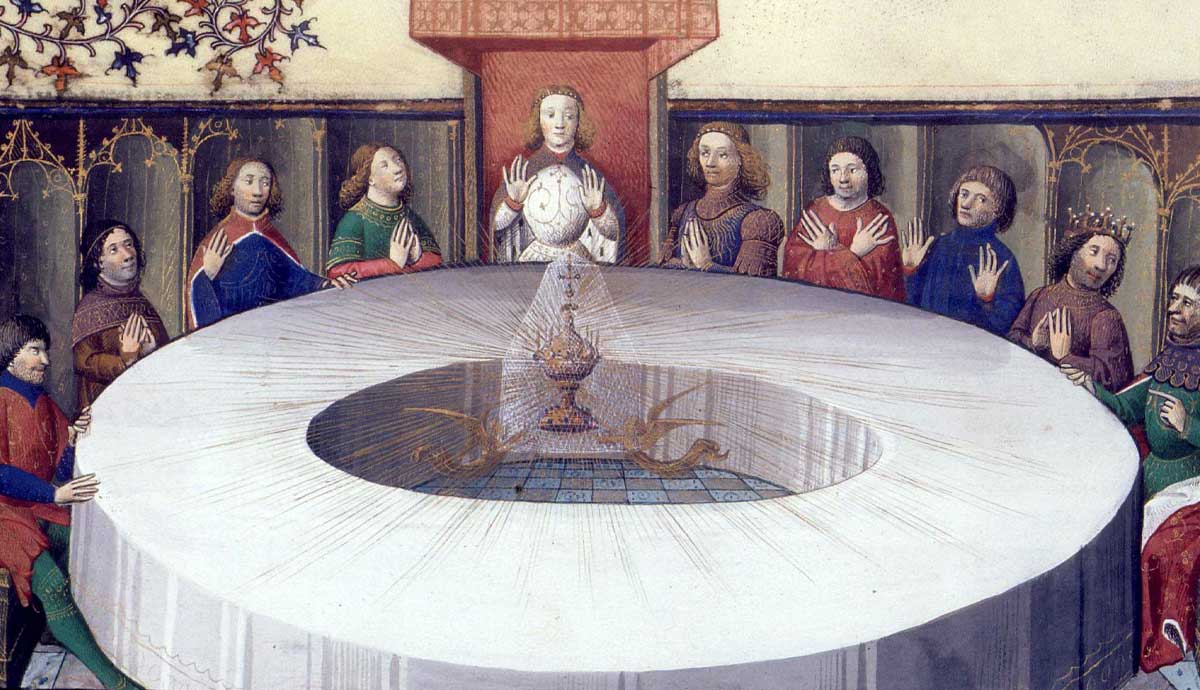
In 1513, Giovanni de’ Medici, second son of Lorenzo “the Magnificent,” became the first Medici pope with the name of Leo X. The election of Giovanni inaugurated the apogee of the Medici family in the Italian peninsula. While Leo turned Rome into a leading cultural center, he underestimated the religious turmoil spreading in Germany. His cousin, Pope Clement VII, was left to deal with the Protestant Reformation and an increasingly unstable political landscape in Europe. Read on to discover how the Medici popes shaped 16th-century Italian and European history.
The Medici Family Between Politics and Arts

In 1436, Filippo Brunelleschi completed an ambitious project that had kept him busy for 16 years: building a dome for the Duomo (Cathedral) in Florence. An octagonal vault built without the traditional wooden supports, the impressive construction is traditionally hailed as the symbol of Renaissance Florence and a testament to human ingenuity.
Brunelleschi’s project was made possible by the patronage of Florence’s wealthiest citizens, especially Cosimo de’ Medici (“the Elder”), the head of the Medici family. The Medicis derived their wealth from their bank, founded in 1397 by Cosimo’s father, Giovanni di Bicci de’ Medici. The credit institute grew under Cosimo, who secured the management of the papal treasury and obtained from Pope Pius II the control of the Tolfa alum mines.
Around the time Brunelleschi finished his dome, Cosimo returned to Florence after a brief exile and, after successfully defeating his opponents, became the de facto ruler of the city, establishing the family’s future political base. Like other prominent Florentine families, the Medici expressed their civic pride and influence through an extensive patronage of the arts. As a result, Florence became the center of the Italian Renaissance, a period that saw the flourishing of artistic and scholarly achievement but also political instability.

As members of the ruling family in Florence, Cosimo’s descendants actively shaped the geopolitical landscape of Renaissance Italy. Chief among them was Lorenzo (nicknamed “the Magnificent”), Cosimo’s grandson, famously described by 16th-century historian Francesco Guicciardini as the “ago della bilancia” (needle of the scale) in the delicate power balance between the rival regional states in the peninsula.
Navigating this rocky political balance was not without its risks. In 1478, Lorenzo almost lost his life due to the Pazzi Conspiracy, a plot organized by Pope Sixtus IV, the King of Naples, and the rival Pazzi banking family to overthrow the Medicis’ leadership in Florence. While the coup failed, Lorenzo’s brother, Giuliano, was murdered by the conspirators on Easter Sunday during mass in the Cathedral.
After the plot and a two-year conflict known as the War of the Pazzi, Lorenzo set out to strengthen his family’s prestige and hold in Florence and the peninsula. In 1489, after Sixtus IV was replaced by Pope Innocent VIII, “the Magnificent” also managed to secure for his second-born, Giovanni, a cardinal hat, thus setting in motion a plan to extend the Medicis’ influence in the Catholic Church. Giovanni, only 13 years old in 1489, was formally appointed cardinal in 1492, the same year of his father’s death.
The Papal States in Renaissance Italy

In the 15th century, the Papal States, a cluster of territories spanning central Italy, saw the succession of a series of pontiffs more interested in the pursuit of temporal power than attending to spiritual matters. Under their leadership, the papacy became an Italian principality seeking political alliances to affirm its hold in the peninsula.
In the previous century, the Holy See’s political power had declined. In 1309, Pope Clement V had transferred the papal capital from Rome to Avignon, a move influenced by King Philip IV of France as a means to curtail the papacy’s role in secular affairs. Upon returning to Rome in 1377, the Papal States’ prolonged internal divisions led to a considerable loss of prestige.
Indeed, the following 40 years, a period known as the Great Western Schism, saw the election of two, and then three, rival popes and the growth of conciliarism, a movement challenging the idea that the pontiff held the ultimate authority within the Roman Church.
After the end of the schism, the papacy sought to regain its power and control over central Italy. The pursuit of political authority, however, resulted in a sharp decline of the church’s religious role. Pope Sixtus IV, elected in 1471, set to strengthen his hold on the Papal States by appointing family members to key offices and launching a policy of territorial aggrandizement. Apart from etching plots to benefit the Holy See and his family, Sixtus was also a patron of the arts and letters, commissioning the construction of the Sistine Chapel and opening the Vatican Library to scholars.

Alexander VI, the head of the powerful Borgia family, was similarly disinterested in his spiritual duties, instead electing to pursue the ruthless promotion of his family’s interests. His successor, Julius II, combined his patronage of the arts with a series of military campaigns aimed at recovering the territories that Alexander VI’s son, Cesare Borgia, had taken from the Papal States. One of the most influential rulers of his age, Julius II, the “Warrior Pope,” also defended the Holy See (and the Italian peninsula) from France’s aims.
In the following years, however, the Italian states struggled to maintain their independence as France and Spain sought to bring the peninsula into their sphere of influence. On top of that, the papacy’s disregard for its religious duties led to another, more serious, division within Christendom.
A Renaissance Ruler: Pope Leo X

Julius II’s military efforts, albeit largely successful, took a toll on the Papal States. After he died in 1513, the cardinals taking part in the conclave opted to elect a less warlike candidate: Giovanni de’ Medici. Taking the name of Leo X, the first Medici pope turned Rome into a leading cultural center in Europe.
Growing up in Lorenzo de’ Medici’s Renaissance court, Giovanni received a humanist education under the tutelage of leading scholars and went on to study theology and canon law at the University of Pisa. Besides classes in Latin and rhetoric, Lorenzo’s sons were trained to become skilled statesmen. A solid education in the art of politics was essential in the ever-shifting landscape of Renaissance Italy, where the ability to form the right alliances was a matter of survival.
Indeed, in 1494, it was the lack of political insight of Giovanni’s older brother, Piero, that led to the overthrow of the Medicean rule in Florence. Unable to protect the city from the French invasion, the Medicis were forced to flee Florence as the population broke into the Medici Palace, the symbol of the family’s power and prestige. Only in 1512 did Giovanni, then a cardinal and protégé of Julius II, manage to reinstate the Medici rule in Florence.

After his election as pope, Giovanni de’ Medici continued to favor his family, naming his cousin Giulio a cardinal and his nephew duke of Urbino. In his last letter to the newly appointed cardinal Giovanni, his father Lorenzo had encouraged his first born to use his position in Rome to “favor your family and your native place,” emphasizing that he “should be the link to bind this city of Florence closer to the Church, and [his] family with the city.” After urging Giovanni to be a “good ecclesiastic,” Lorenzo added what he deemed to be the most important piece of advice: “There is one rule which I would recommend to your attention in preference to all others: Rise early in the morning.”
How much Leo X, often described as intelligent but indolent, heeded his father’s advice remains unclear. It is undeniable, however, that, as head of the Medici family after Piero’s death, he resorted to nepotism to enhance the Medicis’ grandeur in Italy and Europe.
As the ruler of the Papal States, Leo was also an active player in European politics. Like Julius II, the Medici pope sought to prevent foreign powers, mainly France, from extending their influence on the Italian peninsula. After defeating Louis XI at Novara in 1513, the papal anti-French coalition lost the Battle of Marignano two years later. During a meeting in Bologna, the new French king, Francis I, secured the monarchy’s right to nominate priors, abbots, and bishops. Despite the setback, Leo managed to score a victory for his family: his brother Giuliano was made Duke of Nemois.

In Rome, Leo X followed his father’s example and became the embodiment of a Renaissance ruler. More interested in supporting the arts and organizing elaborate feasts than attending to his spiritual duties, Leo largely ignored the calls for religious reforms and depleted the papacy’s treasury. To acquire new funds for the construction of St. Peter’s Basilica, the pope resorted to selling indulgences.
While the pope’s albino elephant Hanno (a gift from the King of Portugal) delighted the Roman court, troubles were brewing in Germany. In 1517, one year after the death of Leo’s beloved Hanno, Martin Luther, a young Augustinian friar from the Wittenberg monastery, denounced the sale of indulgences as a morally bankrupt system in his Ninety-Five Theses.
In 1520, Pope Leo X ordered Luther to recant his theses, threatening him with excommunication. When the Augustinian friar, backed by various members of the German elite, refused, the pope issued the bull of excommunication in January 1521. In December of the same year, Leo X suddenly died. By then, the Protestant movement was already spreading through northern Europe.
Clement VII’s Reign: A Bitter Rivalry & a Divorce

When Leo X died, Rome had become the center of the High Renaissance, with scholars and artists converging on the city to work under the tutelage of the Medici pope. Leo, however, left the papacy with the impervious task of dealing with the religious turmoil brought by Martin Luther. On top of that, the king of France and the newly elected Holy Roman Emperor, Charles V, turned their attention to the Italian peninsula, inaugurating a new phase in the Italian Wars.
Leo X’s successor, the Dutch Adrian VI (the last non-Italian pope until John Paul II) and former tutor of Charles V, sought to introduce a series of reforms. Opposed by most Italian cardinals, however, he was unable to achieve much. He died only a year after his coronation as pope. After a 62-day-long conclave, the cardinals finally agreed on a candidate: Giulio de’ Medic, Leo X’s cousin, who took the name of Clement VII.
The illegitimate son of Giuliano de’ Medici, Lorenzo’s younger brother, Giulio was born shortly before his father died in the Pazzi Conspiracy. Giulio was raised and educated alongside his cousins in the intellectually stimulating Florentine court. Made a cardinal in 1513, he became a close advisor to Leo X.
Cardinal de’ Medici shared his family’s keen interest in the arts. In 1517, he tasked Raphael, the author of a series of frescoes for the papal apartments in the Vatican (including the School of Athens), with creating an altarpiece (the Transfiguration) for his Marbonne cathedral. In 1520, he commissioned Michelangelo to design a series of monuments to commemorate the Medicis for the Sagrestia Nuova (New Sacristy) in San Lorenzo. Then, in 1534, Giulio commissioned Michelangelo to create one of his most famous masterpieces: The Last Judgement in the Sistine Chapel.

While Clement VII’s achievements as a patron of the arts undoubtedly enriched Florence and the Vatican, the second Medici pope was less successful on the political stage. Faced with the combined threat of France and Spain’s expansionist policies, Pope Clement VII often shifted his alliances in an attempt to defend the independence of the Papal States and the Medici family’s control in Florence.
In 1525, Clement supported Charles V’s forces in the Battle of Pavia, which ended with Francis I as a prisoner of the emperor. The following year, however, when Charles V was a direct threat to Italy, the pope promoted the League of Cognac and sided with France. The decision had dire consequences for the papacy.

Growing increasingly frustrated with the lack of action and a delay in their pay, the Landsknechte, or mercenaries (mostly Protestants) fighting for Charles V, sacked Rome on May 6, 1527. The traumatic event is still seen by some scholars as the end of the Renaissance in Italy. Clement VII himself was forced to take refuge in Castel Sant’Angelo. As news of the sack reached Florence, the population rebelled against the pope’s representative. Forced to sign a humiliating peace, the pope, a virtual prisoner of the emperor, returned to Rome only a year later.

By then, another matter had complicated Clement VII’s reign: King Henry VIII’s request to divorce his wife, Catherine of Aragon, the aunt of Charles V. On top of that, in 1528, French troops invaded the Italian peninsula. Clement sent Cardinal Lorenzo Campeggio to England to try Henry’s case with Cardinal Wolsey. However, as he was still under Charles V’s control, the pope was unable to reach a decision.
When the chronically indecisive Clement VII finally pronounced the marriage between the English King and Catherine valid in 1533, it was too late. The king had already married Anne Boleyn in secret. The following year, the Act of Supremacy declared the monarch as the head of the English church.
While Clement VII’s foreign policies led to significant setbacks for the papacy, he was more successful in his attempts to strengthen his family’s prestige. In his treaty with Charles V, he managed to secure the emperor’s promise to help the Medicis reestablish their rule in Florence. Then, Clement arranged the union between Caterina de’ Medici, the daughter of Lorenzo (Leo X’s nephew), with Henri de Valois, Duke of Orleans, Francis I’s second son. When Henri became king of France, the Medici family joined the French royal family.
The Last Medici Popes

Besides Leo X and Clement VII, the Medici family gave the Roman Catholic Church two other popes: Pius IV and Leo XI.
Pius IV (Giovanni Angelo de’ Medici), elected in 1559, did not belong to the Medici of Florence but was born in an unrelated Milanese branch of the family. In the 1560s, Pius IV convened the final session of the Council of Trent, the church’s response to the Protestant Reformation. In 1564, the pope compiled a summary of the doctrine of the Counter-Reformation established in Trento, known as Professio Fidei Tridentina. He also drafted the Index of Forbidden Books and reformed the Catholic catechism.
Leo XI, the last Medici pope, belonged to a collateral branch of the Medici of Florence. Born Alessandro Ottaviano de’ Medici, he was elected on April 1, 1605, but died on April 27, making his pontificate one of the shortest in history.
Elected in the golden ages of the Italian Renaissance, the most influential Medici popes embodied the ideals and tastes of their times, making Rome a political and cultural center in Europe. More temporal rulers than spiritual leaders, Leo X and Clement VII’s policies shaped the political and religious landscape of the following decades.
The Italian Wars that spanned both Medici popes’ reigns ended in 1559 with the Treaty of Cateau-Cambrésis, leaving most of the peninsula under Spanish influence. Italy would regain its independence only in the 19th century with the Risorgimento. Though the Medicis managed to retain control over the Grand Duchy of Tuscany, the political entity that followed the Republic of Florence, until the 18th century, they were under Spain’s sphere of influence.










